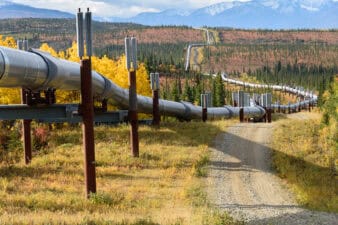It hasn’t been a good month for crude oil.
After spending time above $50 per barrel in June, the price of the commodity slid, showing just how dangerous it is for investors to get their hopes up. Crude is barely holding above $40 per barrel as I type this, currently trading at $40.19.
Obviously, this kind of slide is bad news for energy producers. Can noted hedger Crescent Point Energy Corp. (TSX:CPG)(NYSE:CPG) get through this rough time unscathed? Let’s take a closer look.
Hedging program
Crescent Point has traditionally been one of Canada’s most aggressive hedgers, choosing to lock in a price for much of its production rather than take what the market gives it. This has been a good strategy over the last couple of years.
Some 43% of Crescent Point’s projected production in the second half of 2016 is hedged at approximately US$55 per barrel (or $70 in local Canadian currency). This drops to 28% in the first half of 2017 and just 9% for the second half of next year.
The hedge prices fall as time goes on too, suggesting the hedging market is relatively weak. The floor falls to approximately US$50 per barrel in the first half of 2017, decreasing to the US$45 neighborhood in the latter half of the year.
Remember though, those are hedge floors. If crude recovers, so will the price Crescent Point gets for its production.
The dividend
Crescent Point used to pay a generous $0.23-per-share monthly dividend back when oil prices were strong. That payout is long gone. To the company’s credit, it did keep up the dividend longer than many of its competitors.
The dividend was first cut to a dime per share monthly, but that soon was deemed to be unaffordable. These days the payout is just $0.03 per share each month–good enough for a 1.9% yield.
There’s evidence this new dividend might not even be sustainable. After adjusting for changes in working capital, Crescent Point generated just $34.5 million in free cash flow in the first quarter of 2016. Meanwhile, it paid out $117.9 million in dividends.
I don’t want to scoff at $34.5 million in free cash flow, because in today’s energy market Crescent Point is one of the few producers generating much cash at all. But if the price of crude continues to languish at $40 per barrel, the dividend could be a casualty.
Acquisitions
Crescent Point has plenty of reserves that are just waiting to be drilled. According to company projections, it has enough inventory to keep workers busy for another 14 years without having to bolster reserves.
Still, even with all of that inventory in house, management has still been vocal in saying the company is willing to make more acquisitions–although smaller ones are preferred.
The company has plenty of liquidity to pay for such deals. It has $1.3 billion in bank credit facilities readily available, as well as the ability to issue some additional debt. Most of its debt doesn’t come due for at least another five years.
Overall outlook
With some of the highest netbacks in the Canadian energy sector overall, Crescent Point is well prepared to deal with crude going below $40 per barrel again. Its hedging program is gravy.
The company has shown it can operate effectively in a tough environment, spending within its means for the first time in years. That’s a good thing going forward.
The only concern I’d have is with the dividend. Crescent Point would likely be better off if it banked that cash and used it for acquisitions, capital expenditures, or debt repayment.
If investors are looking for a way to play an eventually recovering oil market, they can do much worse than Crescent Point. It is well positioned to weather these tough times, no matter how long they last.
 Stock Up Sale
Stock Up Sale








